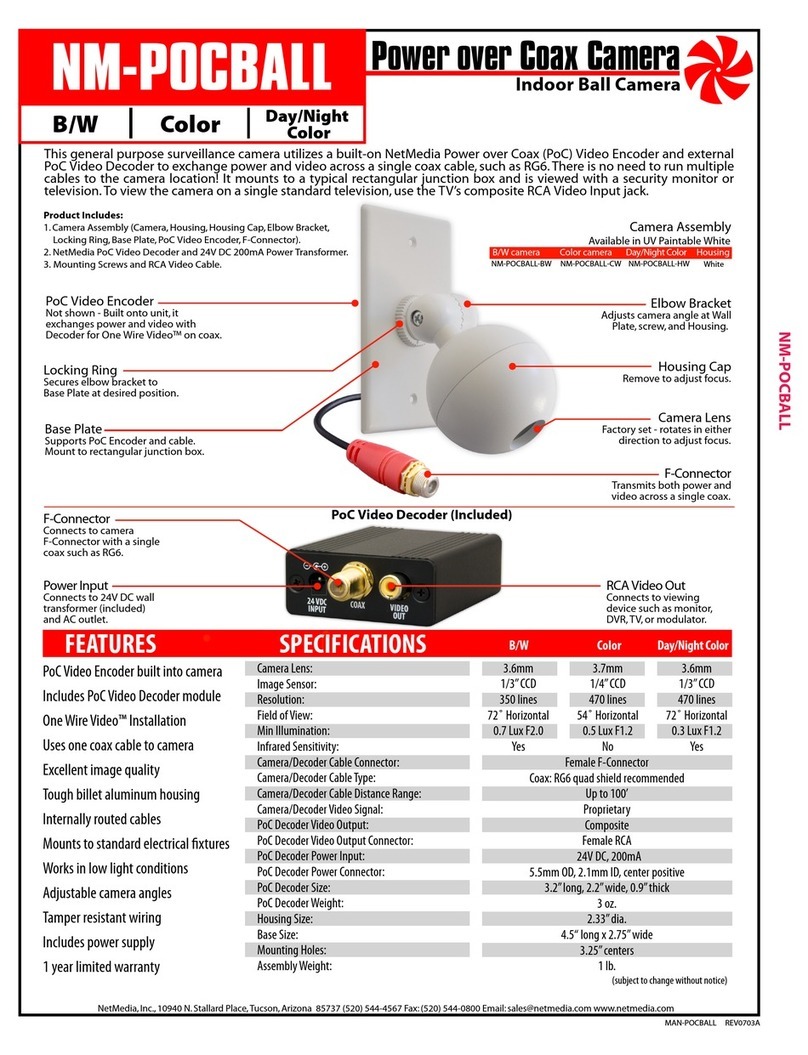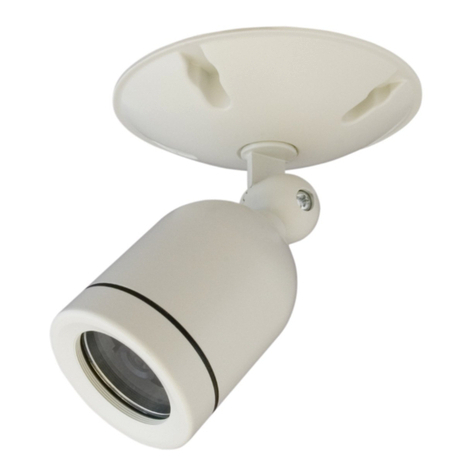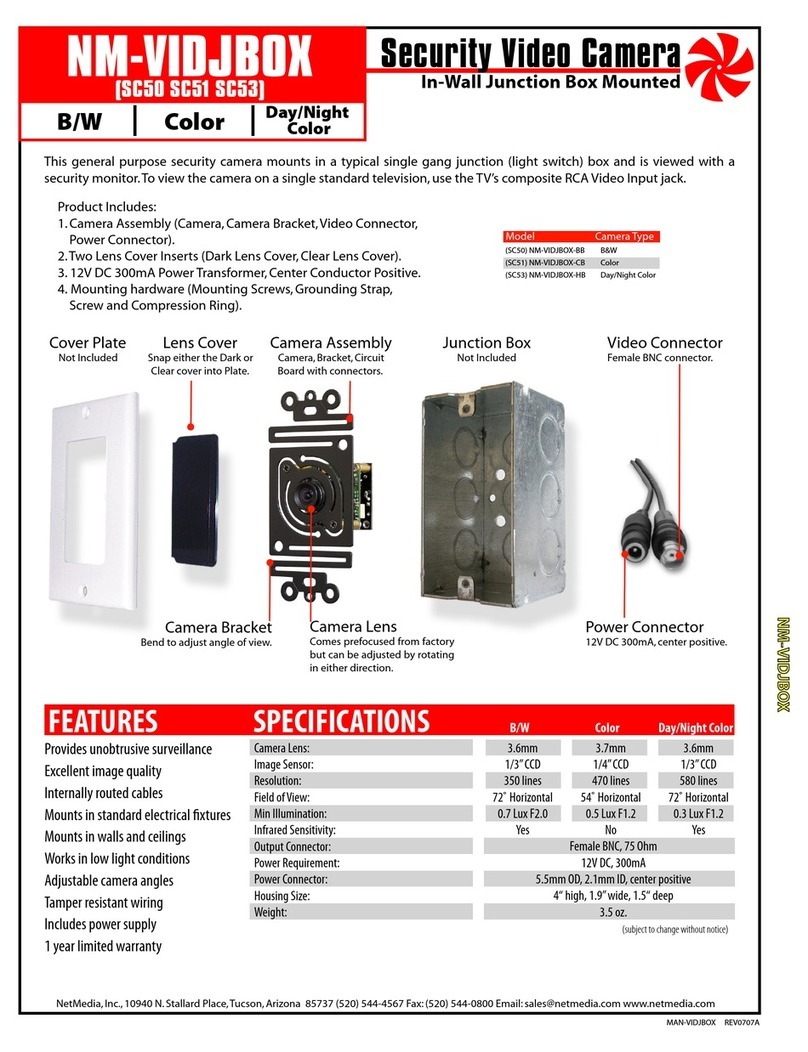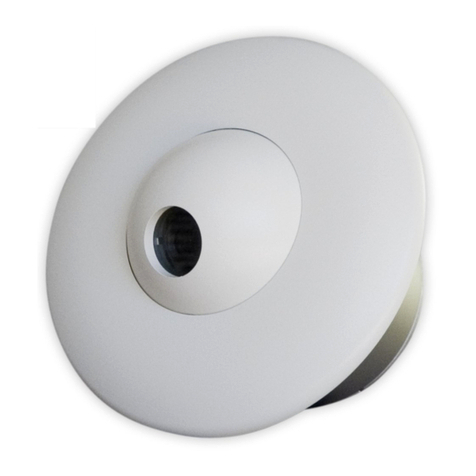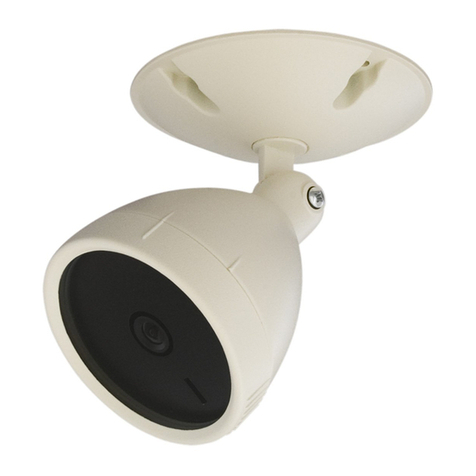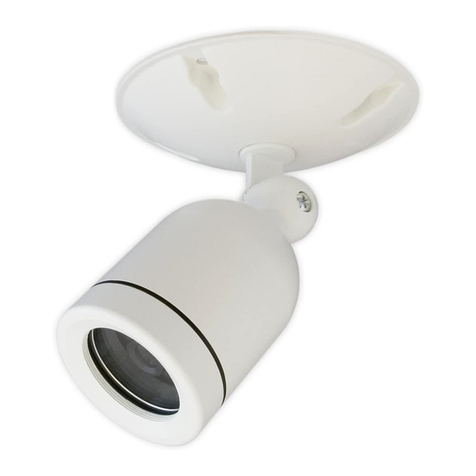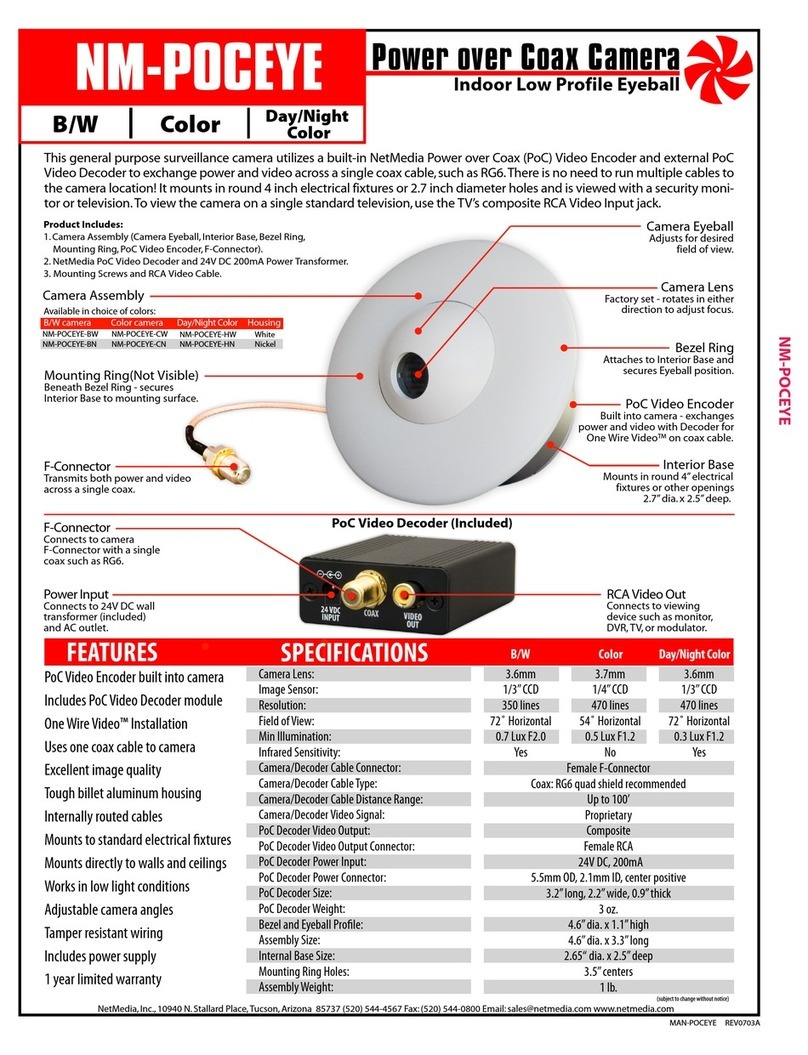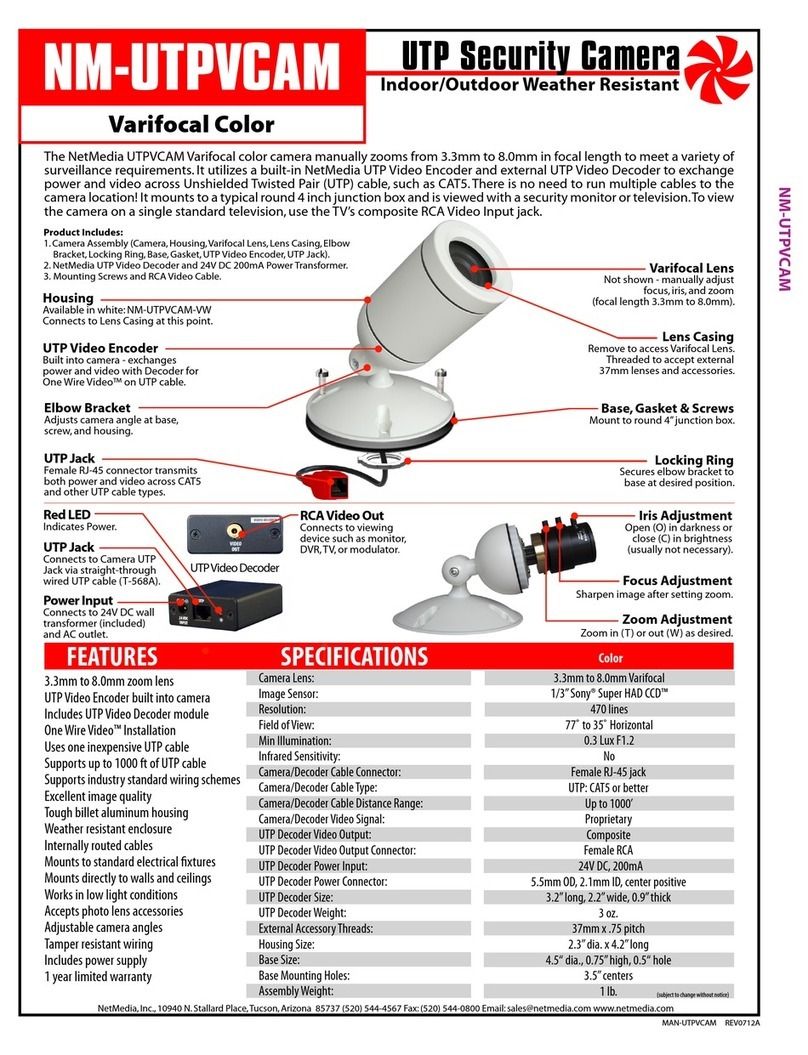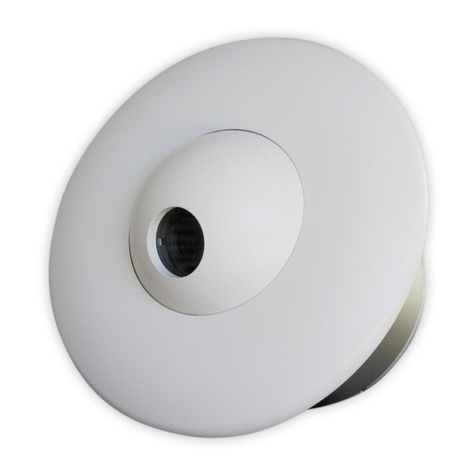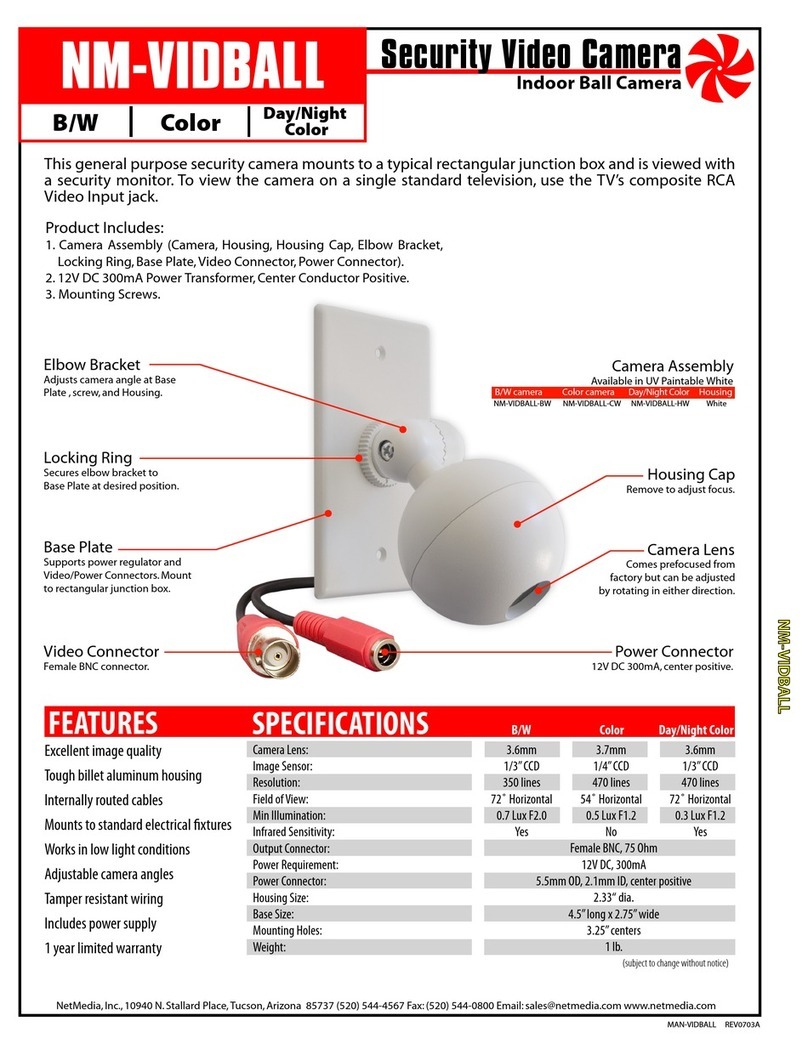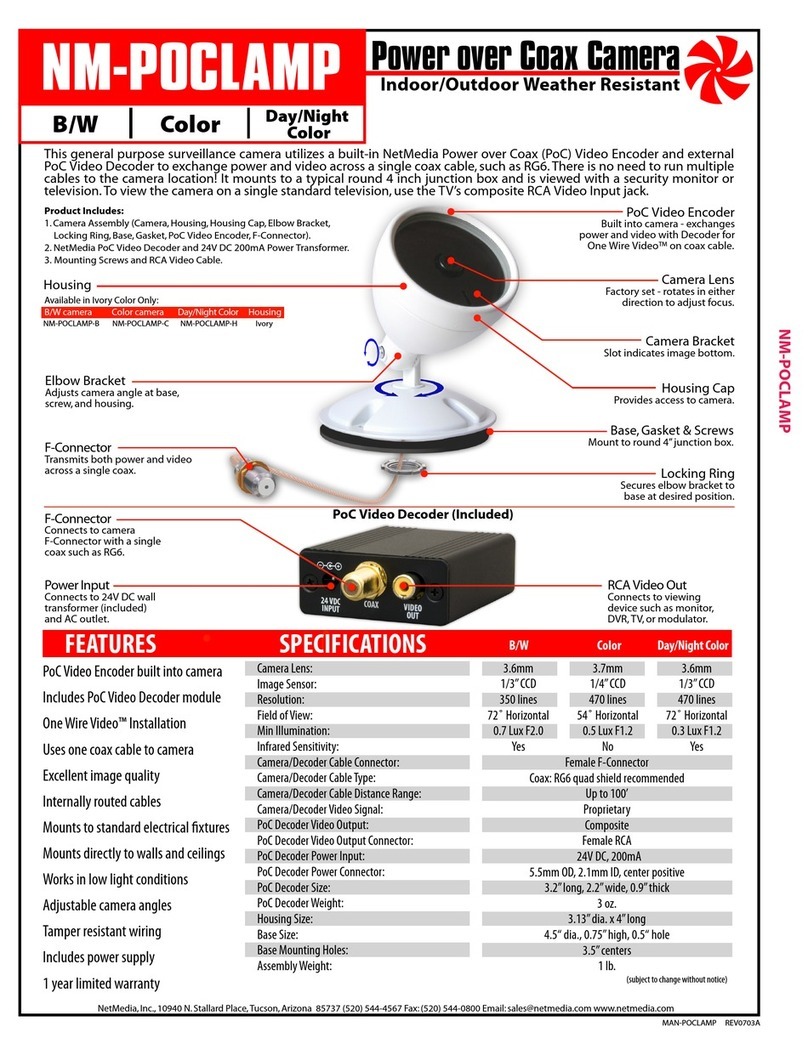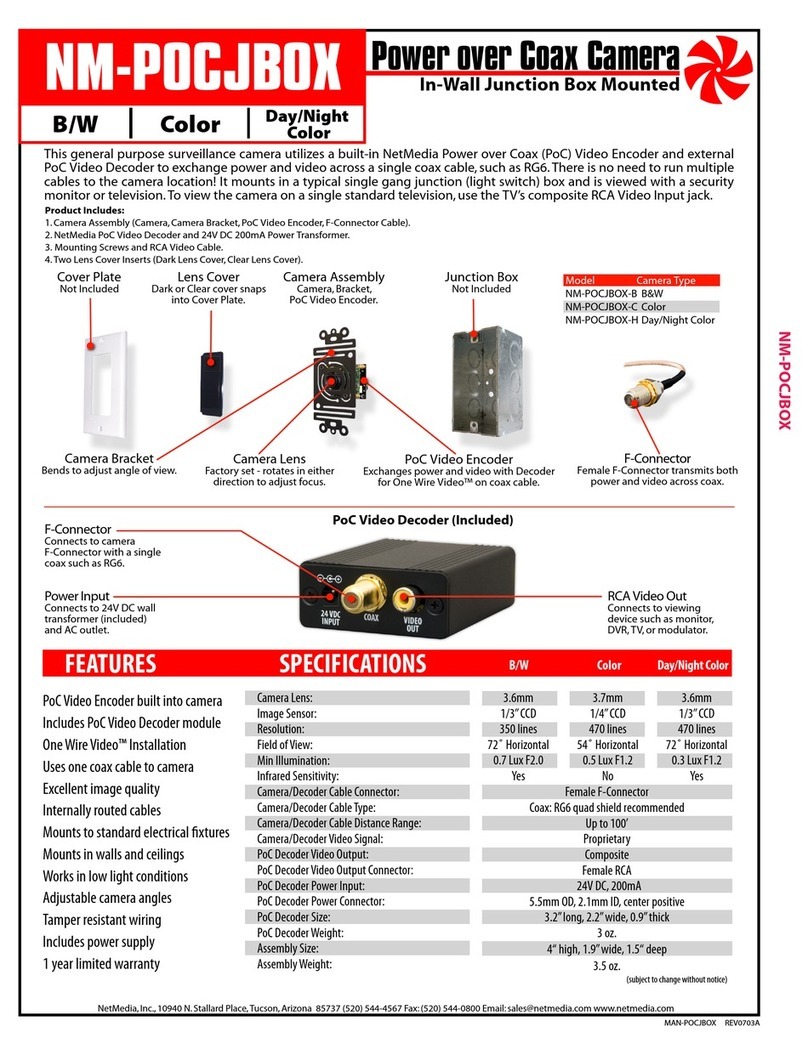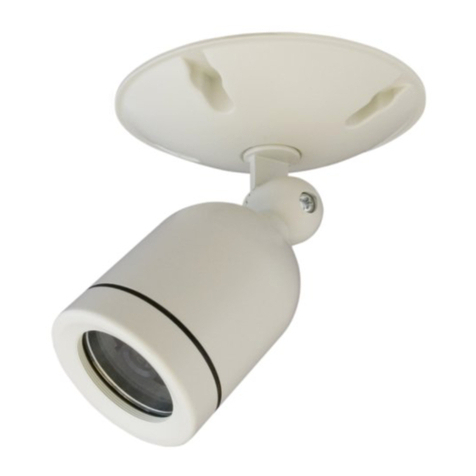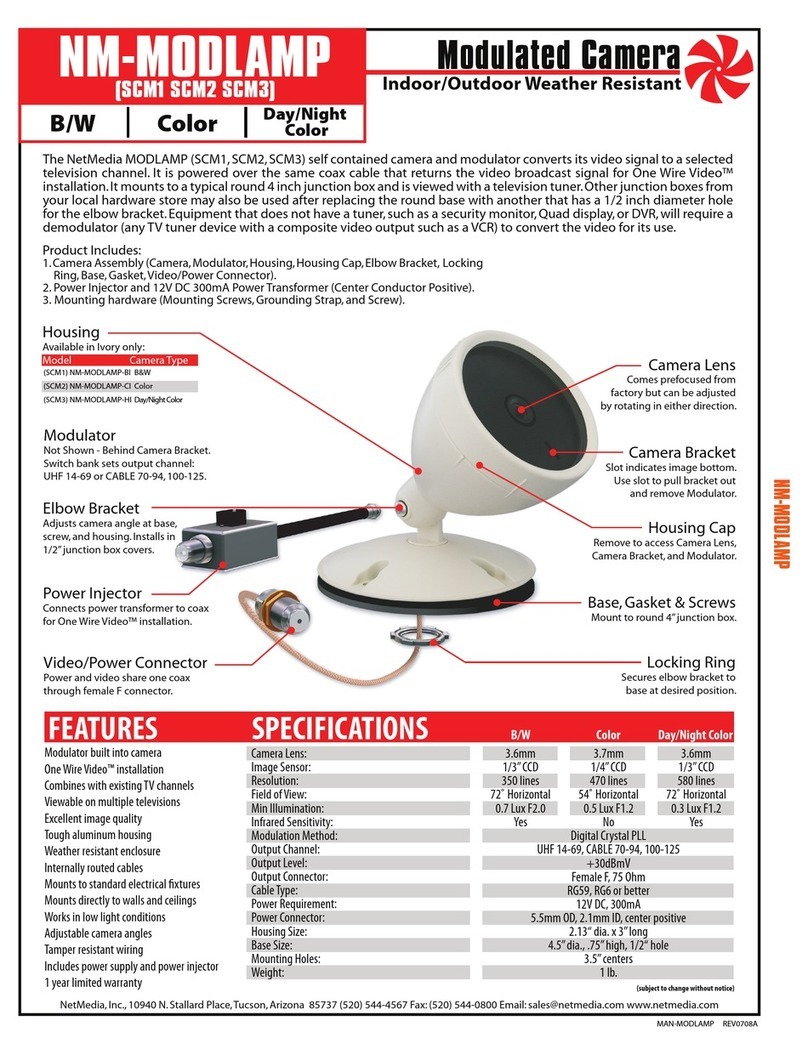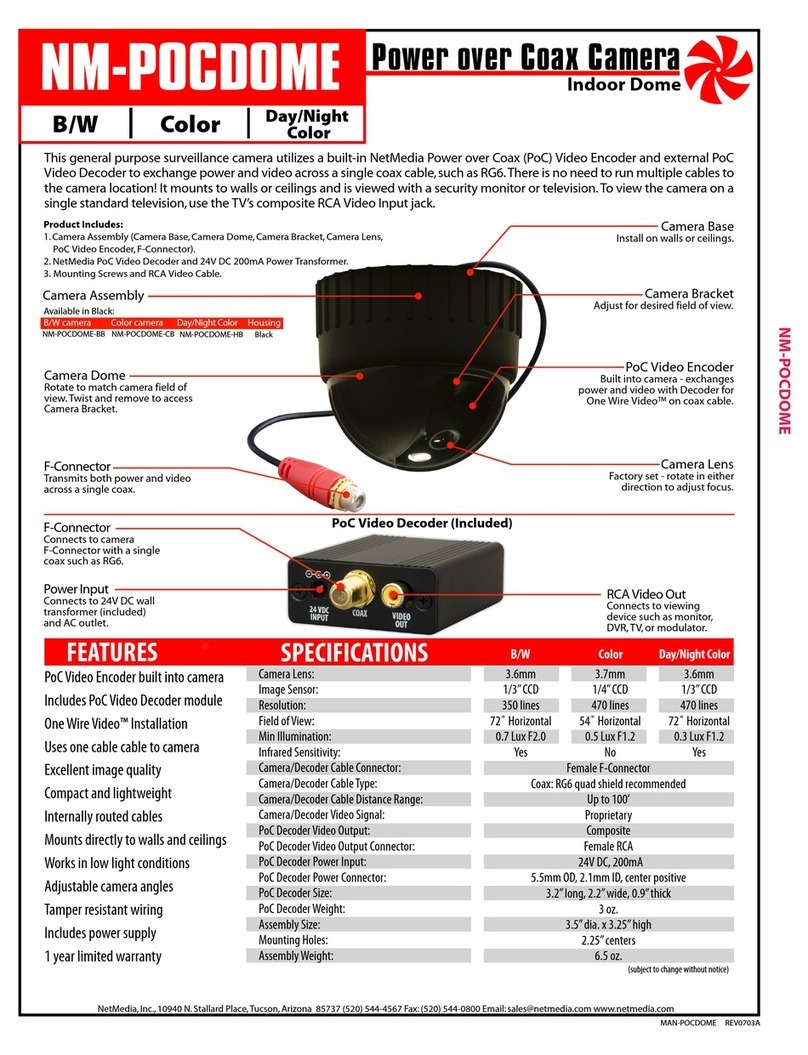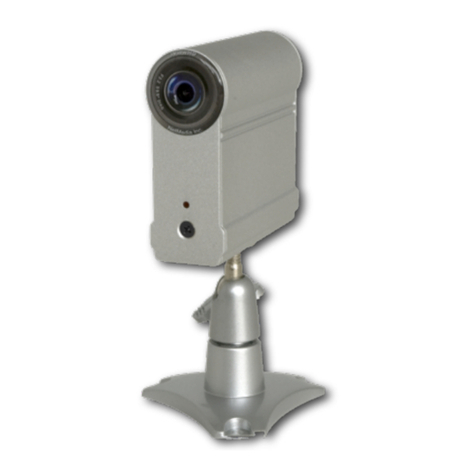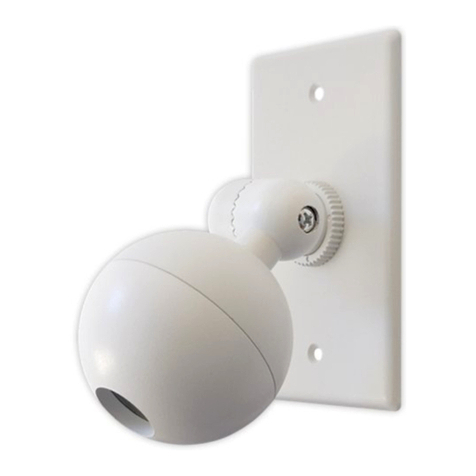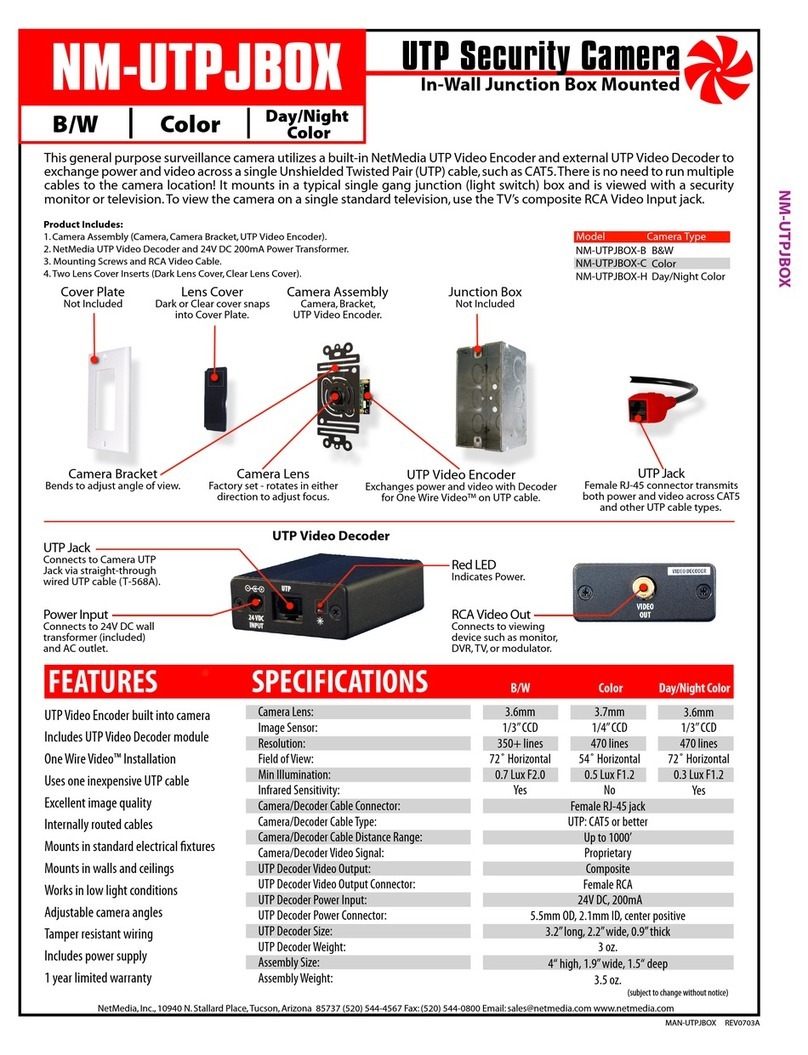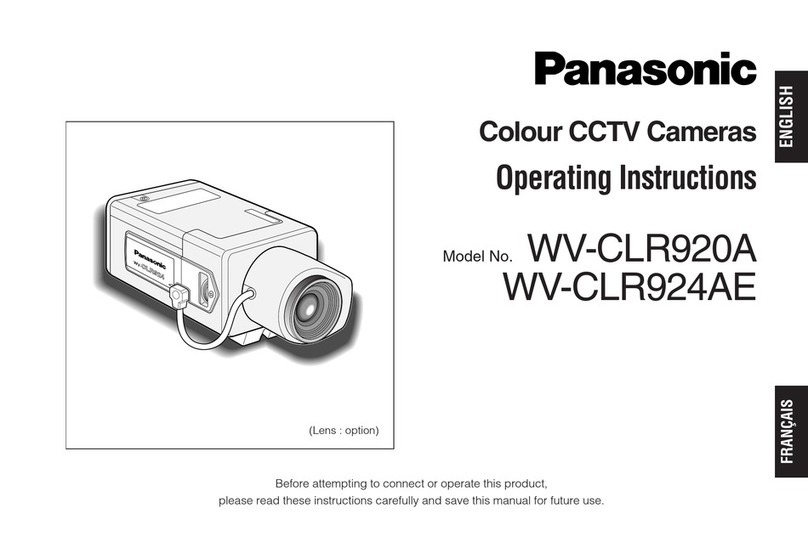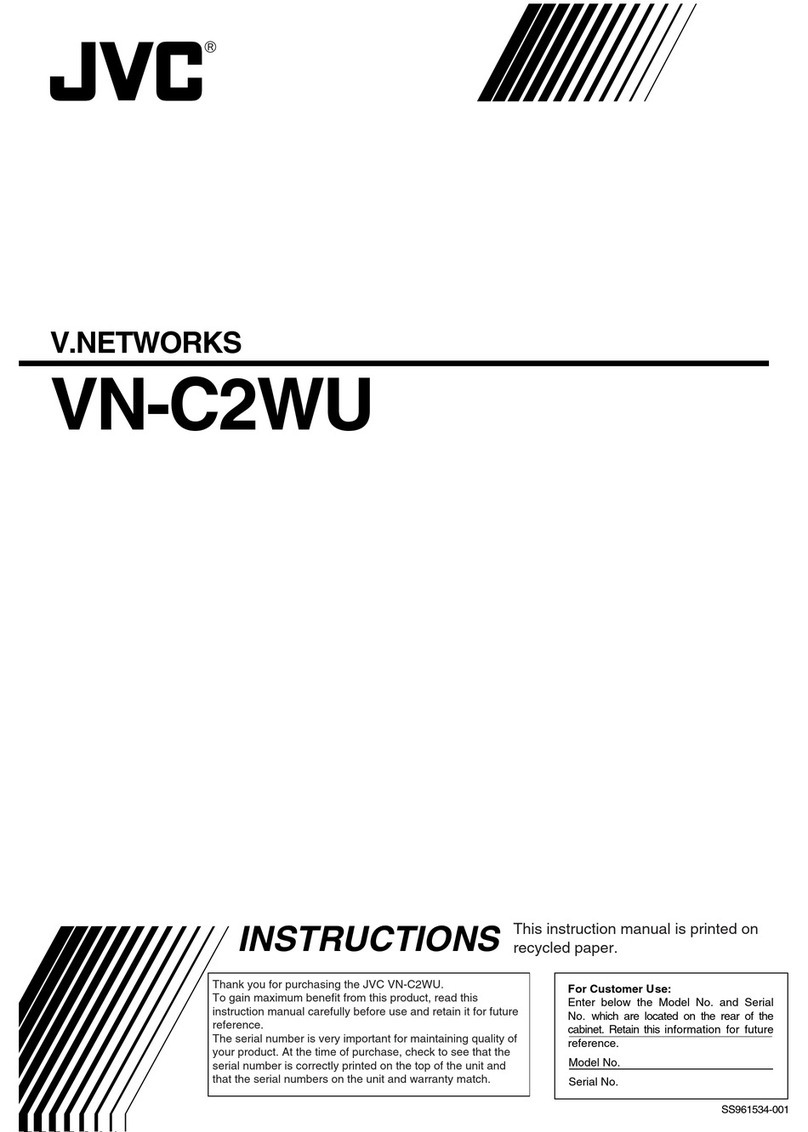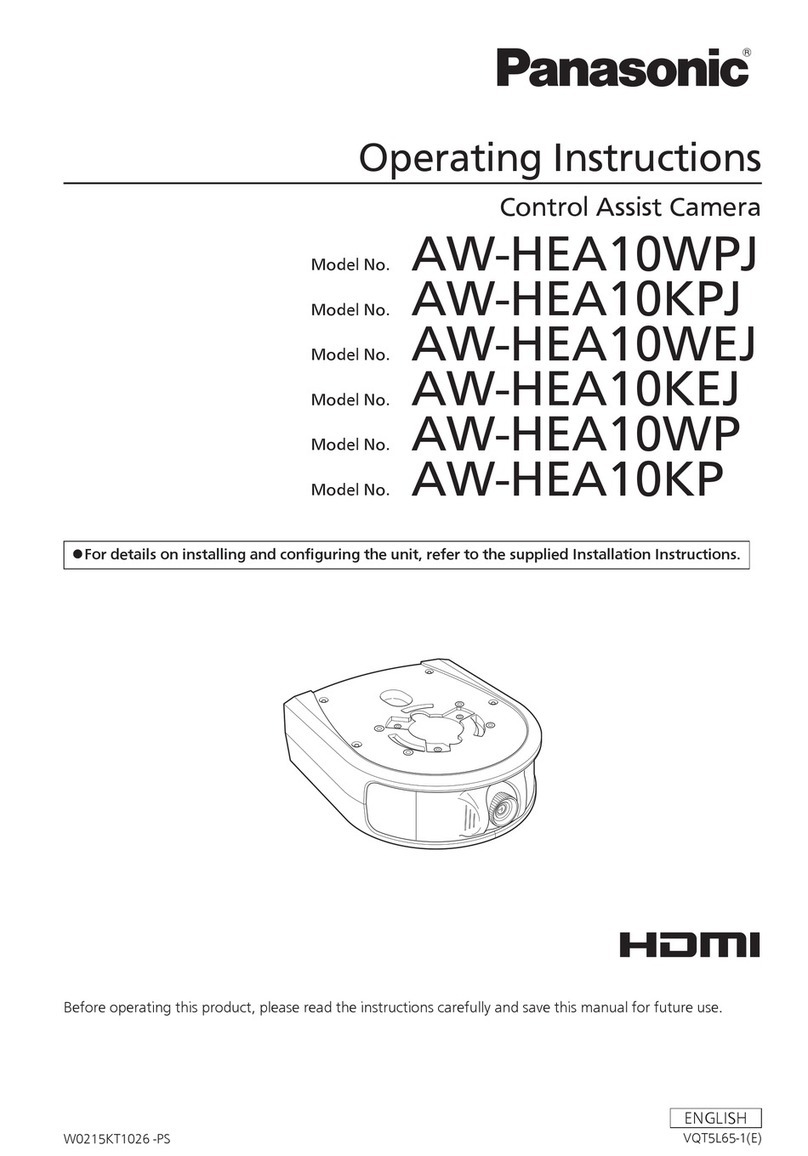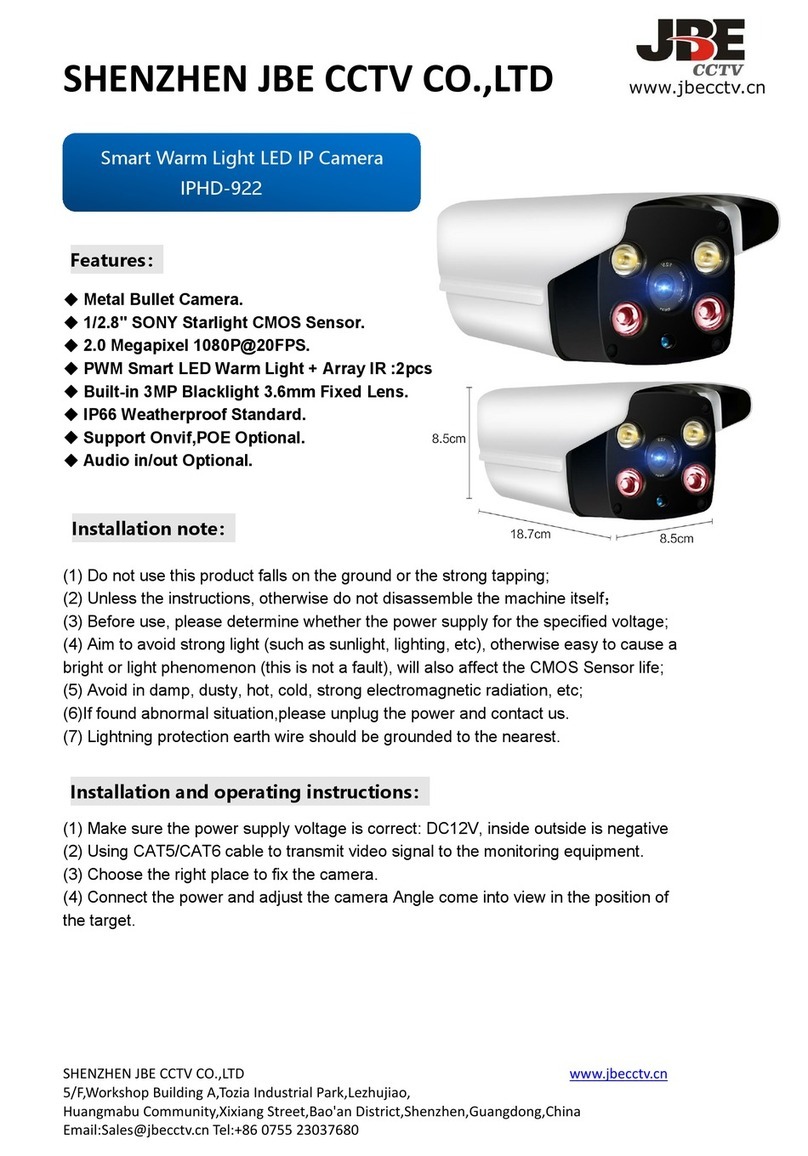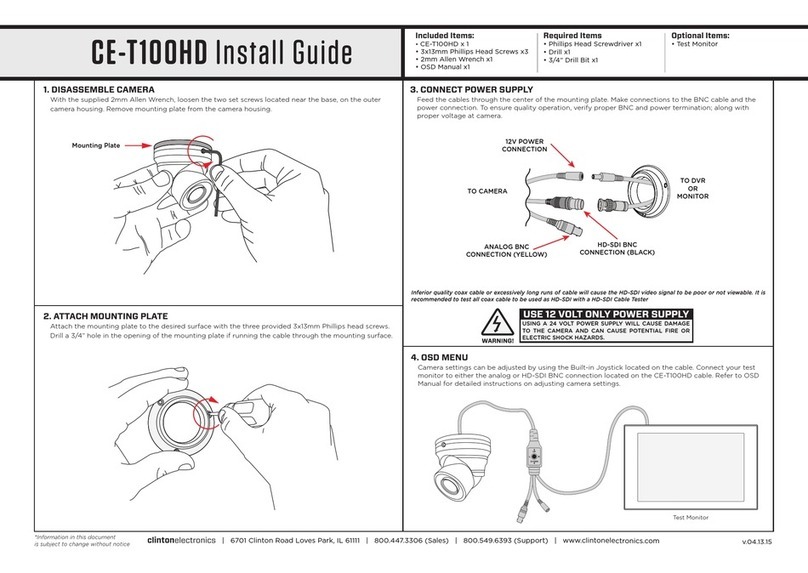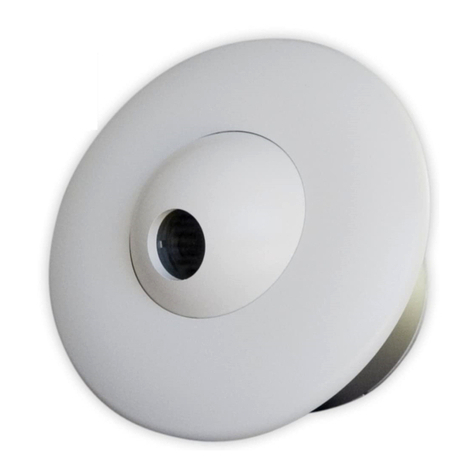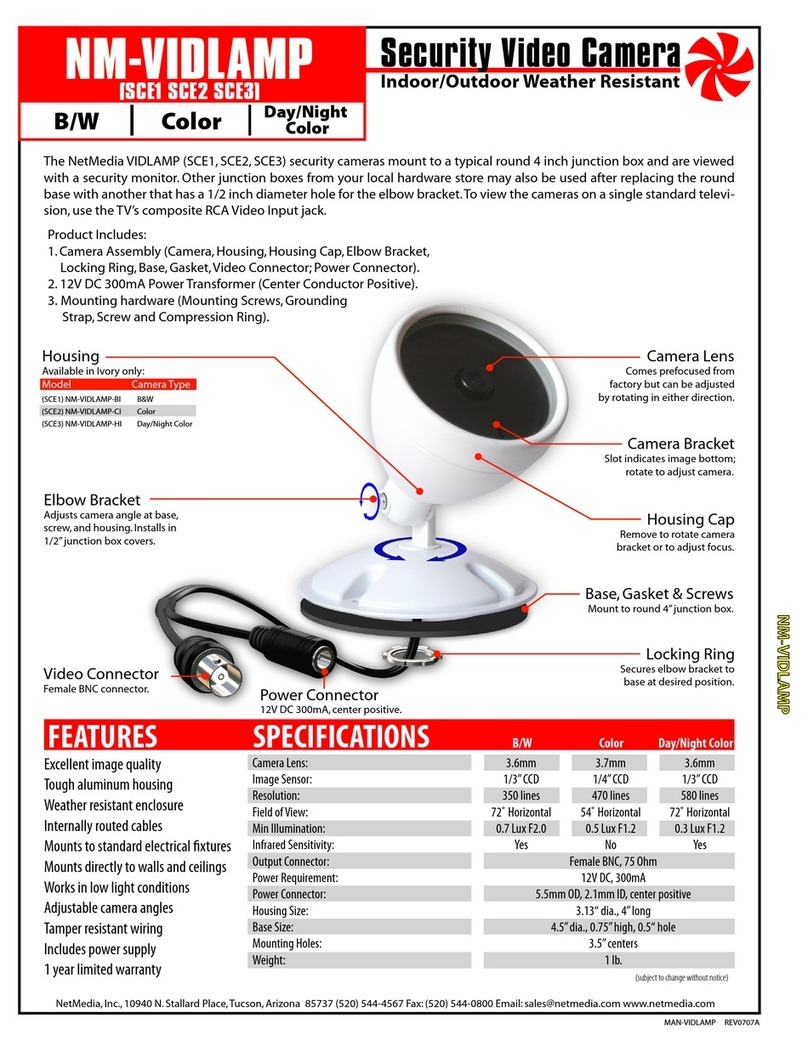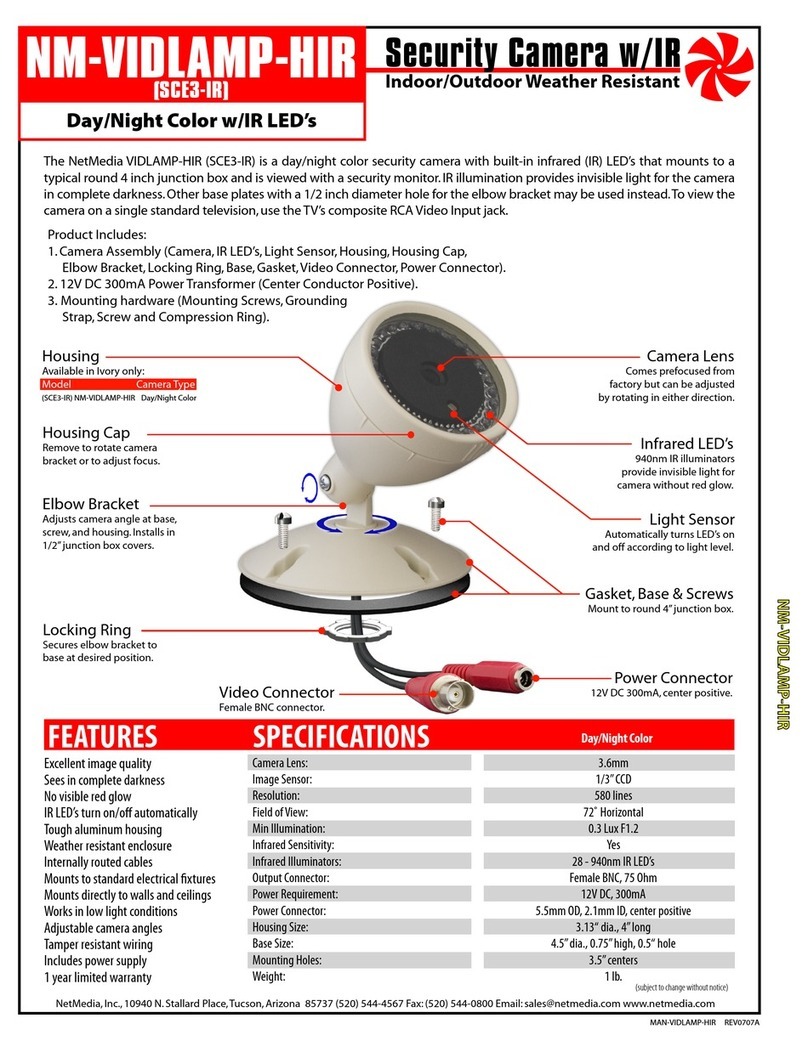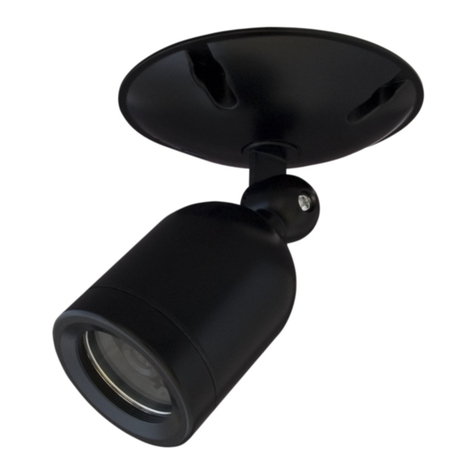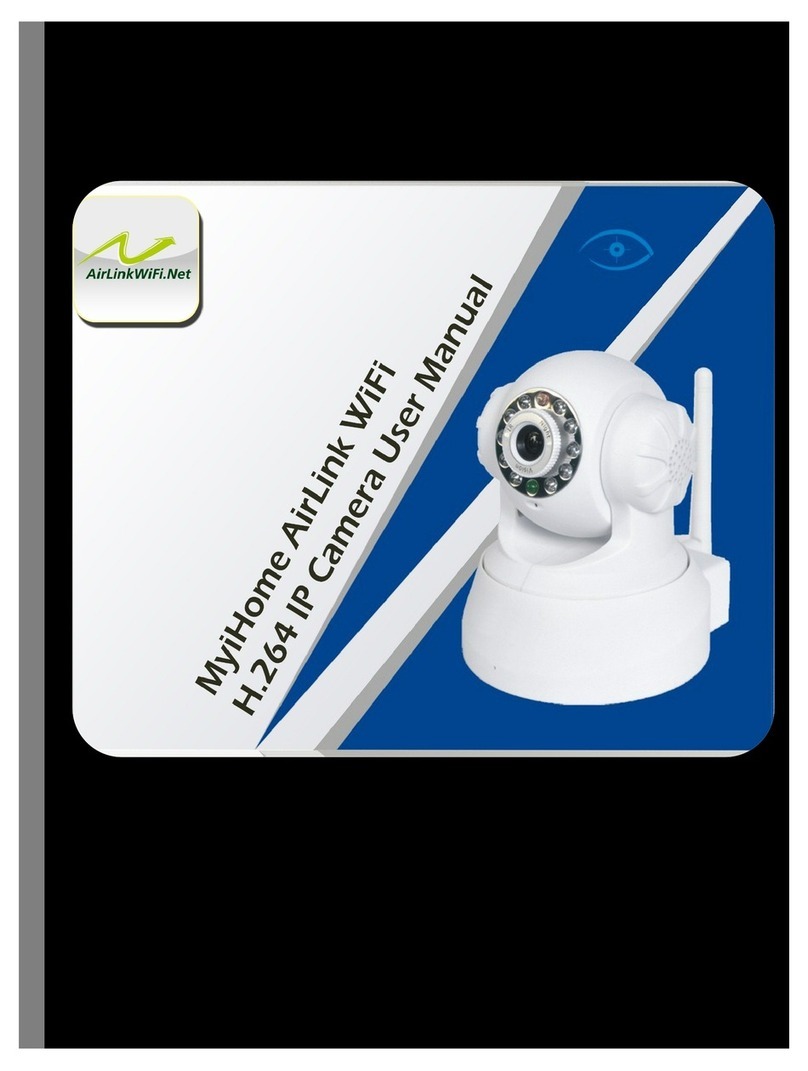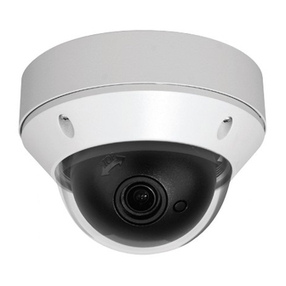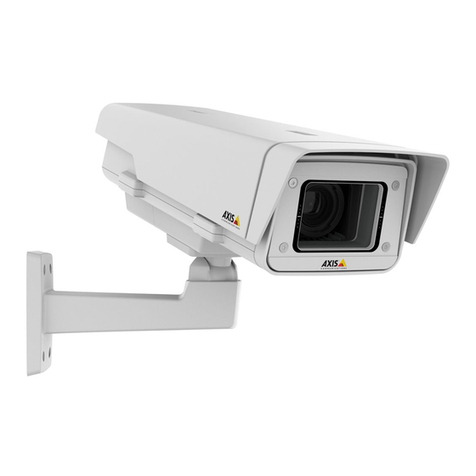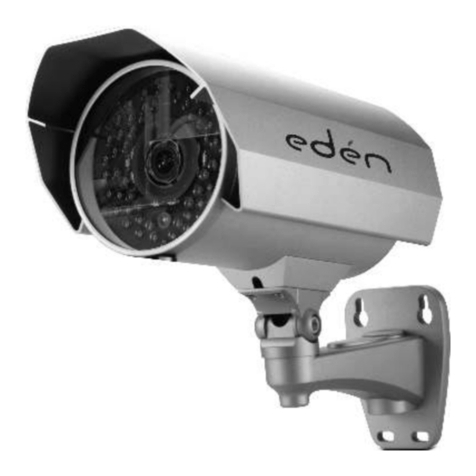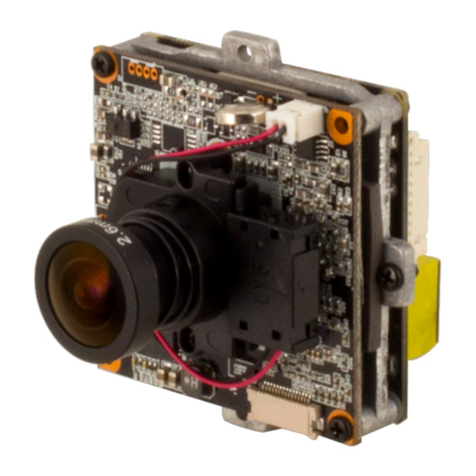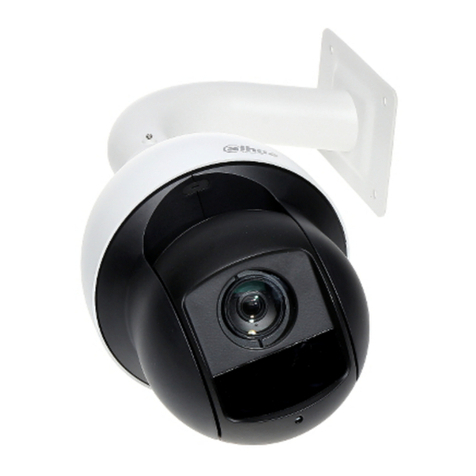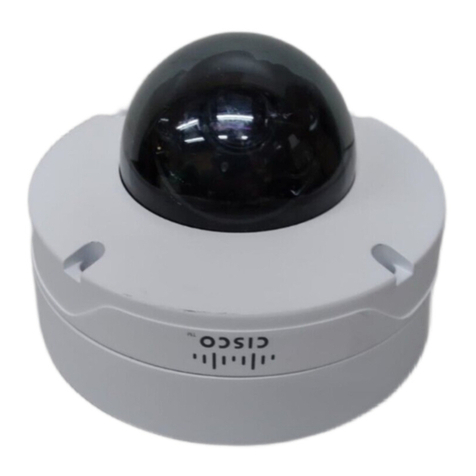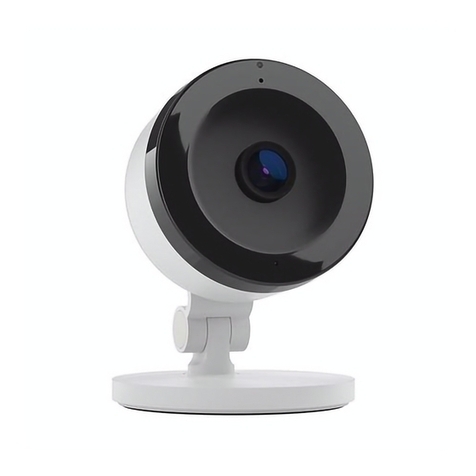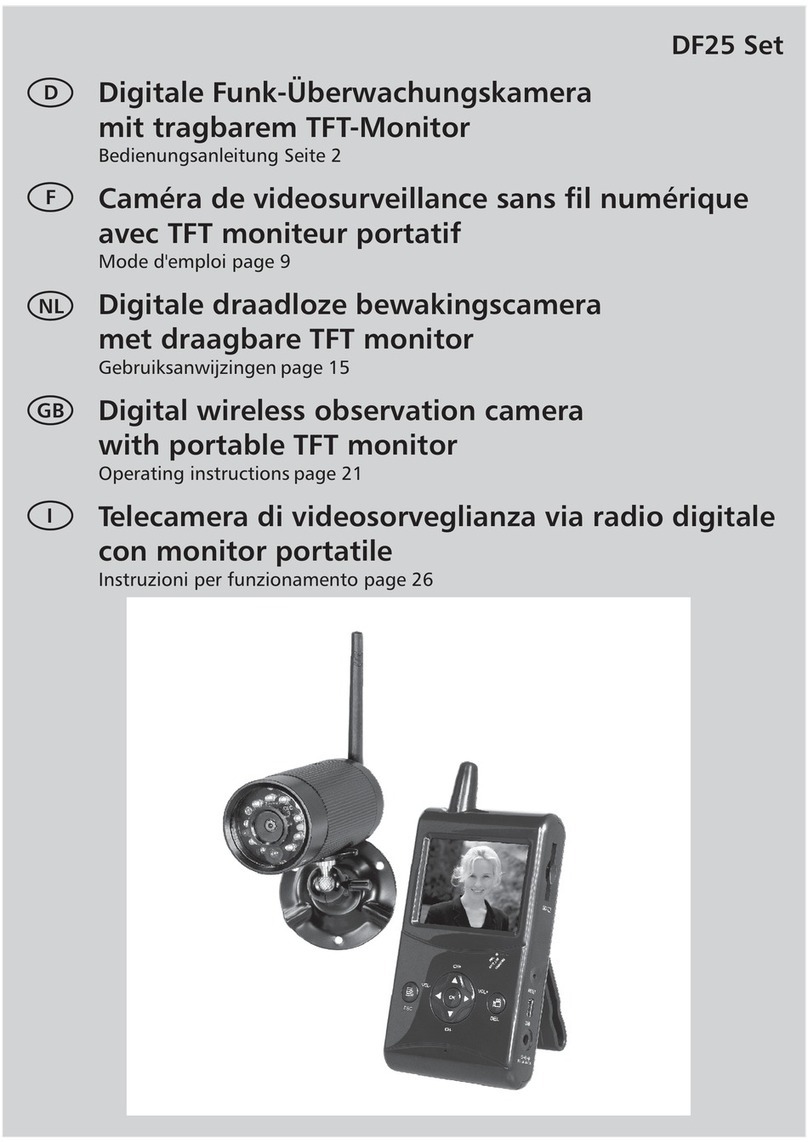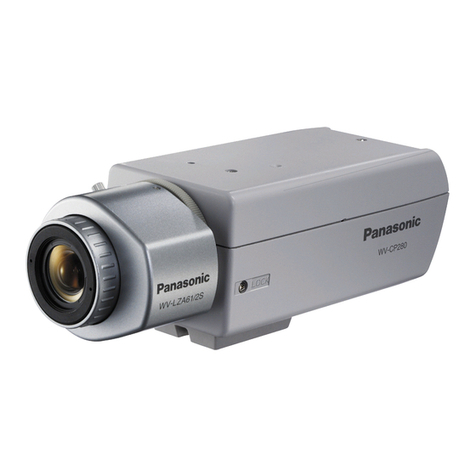
MAN-POCVCAM REV0712A
NetMedia,
Inc.,
10940
N.
Stallard
Place
,
Tucson,
Arizona
85737
(520)
544-4567
Fax:
(520)
544-0800
Email:
[email protected] www
.netmedia.com
Frequently Asked Questions
Q- Can I connect the camera coax to video distribution equipment?
A- NO! Do not connect the F-Connector coax of the camera or Decoder to other video equipment! Doing
so could damage this product and/or the other attached devices! The Decoder ouputs DC voltage on the
coax that other equipment may not be prepared to handle.Each camera and Decoder pair needs a dedicated
point-to-point circuit; nothing else can share the coax. Also, the camera itself will not work properly with RF
splitters, diplexers, and amplifiers. The RCA Video Out jack of the Decoder can connect to composite video
equipment such as monitors,TV’s, DVR’s, and modulators.
Q- How can I see the camera on my TV without using an expensive security monitor?
A- The composite video signal from the PoC Decoder can be plugged directly into one television’s RCA Video
Input jack and viewed when that TV is switched to the proper input. Another option is to feed the Decoder
signal into a modulator. A modulator, such as NetMedia’s MM70, changes the video to a UHF or Cable channel
and allows the signal to be distributed to all your TV’s along with the existing antenna/cable/satellite service.
Q- Is there some way I can get One Wire Video™over coax with other cameras?
A- Yes, the NetMedia PoC Video Encoder and Decoder can be purchased as a set, NM-POCSET, for use with
popular 12V DC cameras. The Encoder will accept the camera’s composite video signal and output about
150mA of regulated 12V DC power.
Q- Why do the light areas of the picture look washed out?
A- The camera’s automatic electronic shutter (AES) must decide how to adjust itself according to the brightness
of the scene. When a picture has both light and shadow, the camera adjusts itself based on the percentage of
each area in the image. If it decides to favor the shadow portions then the light areas will be overexposed. In
addition, cameras that are designed for low light or infrared sensitivity typically favor the shadow areas and
look more washed out under bright conditions. Try adjusting the image field so that more light areas are
visible. The Varifocal Lens also has a manual Iris Adjustment; try closing it in increments, as the AES
compensates, until a satisfactory image is achieved. It is normal though, that as the lighting conditions
change throughout the day, the camera’s automatic re-adjustments will impact the picture’s dark and light
areas.
Q- Why are the shadow areas too dark to see much detail?
A- This is like the washed out question above except opposite. In this case, the camera’s automatic electronic
shutter (AES) is favoring the light areas at the expense of the shadow areas.Try adjusting the image field so
that more shadow areas are visible. The Varifocal Lens also has a manual Iris Adjustment; try opening it in
increments, as the AES compensates, until a satisfactory image is achieved. It is normal though, that as the
lighting conditions change throughout the day, the camera’s automatic re-adjustments will impact the
picture’s dark and light areas.Also keep in mind that the camera still does need some kind of light in order to
see. If necessary, add some lighting to the dark area to improve visibility.
Q- Will the camera work at distances beyond 100 feet?
A- Though we do not recommend or support doing so,some people find that the camera functions satisfactorily
at distances greater than 100 feet.At that range,the video quality degrades as the cable length increases but
until the power gives out over the next few hundred feet, it may still be acceptable for your application.
Q- What is the difference between Power over Coax and modulated devices?
A- Both are similar because they enable One Wire Video™ using a single coax.They differ though in their type of
video output signal. Our modulated devices, such as the RM70 (which supplies remote power for popu;ar
12VDC cameras),output a TV channel that requires a TV tuner to view.This is handy for distributing the signal
to all the TV’s with the same coax, splitters, and amplifiers that transmit the local antenna, cable, or satellite
signal.It is more inconvenient though,for using the signal with equipment that does not have a tuner such as
a security DVR or Quad screen display. Our PoC modules and cameras output a composite video signal that is
directly compatible with such equipment. Whole house distribution can still be accomplished with PoC by
modulating the output of the DVR or Quad.
NM-POCVCAM





